
Architect of natural gardens Václavíková: "Teachers, children, and parents must get properly attuned to the transformation."
Architect Dana Václavíková worked for 11 years as a coordinator for the transformation of land into natural gardens at Waldorf School Brno. This experience is very useful in her current job, where she transforms classic school gardens into natural ones. These gardens then serve children and educators for outdoor teaching and provide a space for the local community to meet. Dana Václavíková has also long collaborated with the Karel Komárek Transformations Foundation, which focuses on the renewal of school gardens.
What schools are you planning gardens for?
Schools that reach out are very engaged, where the entire team pulls together. I believe this is the most important thing. There must be not only the will to want to change something but also the desire to spend a lot of time outdoors with the children. For such a tuned-in school, it is a joy to come up with anything architectural.
What do schools hope to gain from collaborating with you?
The schools that contact me generally want a garden that they have seen at another school. When I arrive, I ask many questions. I'm interested in why and how they want to make a change or if they have already involved parents, children, and the community. If not, I advise them on how to effectively plan communally. If a space for children, teachers, parents, and the wider public is to be created, it is necessary to involve all those who will use the new garden in the creation process. This includes parents and grandparents who pick up the children and may wait for them in the garden. I am currently designing a garden for the Elementary and Kindergarten School in Telecí, which is open to the public. In the summer, it is also used by tourists, cottage owners, and cabin dwellers. Once the transformation is completed, I expect community life here will be strengthened further.
The opening of gardens to the public can thus be considered a new trend that is beginning to spread. However, I personally encounter that parents and children are not very interested in staying at school for long. What do you think needs to be done to change this situation?
The school needs to start thinking differently. First and foremost, it is necessary to agree that the school wants to involve parents. Because there will be situations where the school turns to parents, for example, when it wants to build or reconstruct something. The school can also reach out to parents as volunteers to lead clubs. All of this can be done precisely in the gardens. The school should also change matters regarding the operation of the school in relation to the transformation of the garden. It is most appropriate for the public to be involved in the overall change from the beginning. People need to know why and how the garden transformation is taking place and how much work it actually requires to accomplish it. I also recommend creating a visitor policy for parents and selecting someone responsible for its adherence.
Does it ever happen that a school changes its mind about garden modifications during planning? What obstacles stand in the way of planning?
Educators ask how ongoing maintenance will look like. I try to suggest several options for them to discuss whether they can manage it by themselves or involve the provider. I further follow the principle that the garden should represent the four elements – water, fire, earth, air. There have been several times when I offered schools a pond or a small lake, but they didn't want such a solution. Educators feared they wouldn’t be able to supervise safe use in the garden. I respected that, and thus suggested an alternative in the form of a small birdbath. It happens that over time the situation changes, and schools reach out themselves, saying they would eventually like a pond. Or they build it themselves with the parents’ help.
What specifically do schools fear?
Anything can happen in the garden. It's just like when a parent goes out with children. A child climbs onto a stump, falls, and injures their thumb. I propose natural things that can be found in the surrounding landscape. I create small landscapes in school gardens. Parents should be familiar with the solutions so that they can bear a certain level of risk along with the school's administration. Something can always happen outdoors, whether you’re with children in preschool, in a park, or in the woods.
How are schools doing when it comes to teaching gardening skills? Do children grow any plants as part of their education?
Gardening is gradually making a comeback, thanks to grant calls. Schools are establishing beds and trying to garden at least a little. Children plant herbs and annuals, later trying radishes and lettuce. For example, the Rokytnice Elementary School in Vsetín has been tending to many beds for several years. Children of all ages participate. They also have a fruit orchard and beautiful educational signs. The teachers, who enjoy outdoor teaching, can be especially proud of the results. Transitioning teaching from the classroom to outdoors is not easy at first, as children are, at least initially, very distracted. However, they gradually get used to it and eventually prefer being outside over being inside. Implementing outdoor education also needs to happen differently, such as through block learning, meaning a two-hour block of instruction as part of the main teaching, lasting 3-4 weeks.
Why should schools hire you? Why shouldn’t they design a new school garden themselves?
As an architect, I bring meaning and context to the space. Schools often know what they want but cannot connect the dots. I find it important to create elements in such a way that there is enough space around them and individual classes do not disturb each other during outdoor teaching. That is the added value of the architect. They come up with a cohesive design, from which one can start and that can be realized gradually according to stages, finances, and possibilities. They recommend what schools can handle on their own and what is better to hire an expert for.
Have you ever experienced that a project got stuck?
Yes, most often due to finances. After that, there follows a long period of waiting. Then the school prepares the land for planting greenery, which ultimately does not happen. Then green planting succeeds, but the school is disappointed again that it does not have the originally planned shelters, as there were no funds left for them. Creating a new garden is simply a complex process, so I try to design simple plantings, local trees, and shrubs that fit into the surrounding landscape. The garden should also include at least one perennial bed. Schools want herbs so that they can recognize them with the children. That is the foundation. When the garden is well established, maintaining it in the future is not so much work.
When children participate in the transformation, do they also learn project planning?
In one school, we presented both the work of an architect and a designer. The children themselves got to try out how community planning works. The younger ones modeled the proposal in clay and the older ones created the project. They learned the entire process: from surveying the land to accurately plotting it with a tape measure. In this way, the children create a plan that serves as the basis for the architect. They work in groups, and the results of their work serve as valuable input for planning the garden.
What should be the first step if a school wants the transformation of its garden to succeed?
The first thought can come from a teacher, principal, or provider, such as the mayor of the municipality. Recently, a mayor approached me because he was thrilled about the garden I designed. Then a motivated and cohesive team must form at the school. Next, it is necessary to choose a driving force who will take care of the garden transformation. Schools usually nominate one representative with whom I communicate as an architect. They gather relevant information and materials. It is also important to have parents and the wider community on your side. Then, all that's left to say is: we want change, and we’re going for it!
The Karel Komárek Transformations Foundation is organizing an educational conference on March 28, where Dana Václavíková will present a workshop on the role of the architect in creating a school garden. More information about the event and registration can be found on this page.
What schools are you planning gardens for?
Schools that reach out are very engaged, where the entire team pulls together. I believe this is the most important thing. There must be not only the will to want to change something but also the desire to spend a lot of time outdoors with the children. For such a tuned-in school, it is a joy to come up with anything architectural.
What do schools hope to gain from collaborating with you?
The schools that contact me generally want a garden that they have seen at another school. When I arrive, I ask many questions. I'm interested in why and how they want to make a change or if they have already involved parents, children, and the community. If not, I advise them on how to effectively plan communally. If a space for children, teachers, parents, and the wider public is to be created, it is necessary to involve all those who will use the new garden in the creation process. This includes parents and grandparents who pick up the children and may wait for them in the garden. I am currently designing a garden for the Elementary and Kindergarten School in Telecí, which is open to the public. In the summer, it is also used by tourists, cottage owners, and cabin dwellers. Once the transformation is completed, I expect community life here will be strengthened further.
The opening of gardens to the public can thus be considered a new trend that is beginning to spread. However, I personally encounter that parents and children are not very interested in staying at school for long. What do you think needs to be done to change this situation?
The school needs to start thinking differently. First and foremost, it is necessary to agree that the school wants to involve parents. Because there will be situations where the school turns to parents, for example, when it wants to build or reconstruct something. The school can also reach out to parents as volunteers to lead clubs. All of this can be done precisely in the gardens. The school should also change matters regarding the operation of the school in relation to the transformation of the garden. It is most appropriate for the public to be involved in the overall change from the beginning. People need to know why and how the garden transformation is taking place and how much work it actually requires to accomplish it. I also recommend creating a visitor policy for parents and selecting someone responsible for its adherence.
Does it ever happen that a school changes its mind about garden modifications during planning? What obstacles stand in the way of planning?
Educators ask how ongoing maintenance will look like. I try to suggest several options for them to discuss whether they can manage it by themselves or involve the provider. I further follow the principle that the garden should represent the four elements – water, fire, earth, air. There have been several times when I offered schools a pond or a small lake, but they didn't want such a solution. Educators feared they wouldn’t be able to supervise safe use in the garden. I respected that, and thus suggested an alternative in the form of a small birdbath. It happens that over time the situation changes, and schools reach out themselves, saying they would eventually like a pond. Or they build it themselves with the parents’ help.
What specifically do schools fear?
Anything can happen in the garden. It's just like when a parent goes out with children. A child climbs onto a stump, falls, and injures their thumb. I propose natural things that can be found in the surrounding landscape. I create small landscapes in school gardens. Parents should be familiar with the solutions so that they can bear a certain level of risk along with the school's administration. Something can always happen outdoors, whether you’re with children in preschool, in a park, or in the woods.
How are schools doing when it comes to teaching gardening skills? Do children grow any plants as part of their education?
Gardening is gradually making a comeback, thanks to grant calls. Schools are establishing beds and trying to garden at least a little. Children plant herbs and annuals, later trying radishes and lettuce. For example, the Rokytnice Elementary School in Vsetín has been tending to many beds for several years. Children of all ages participate. They also have a fruit orchard and beautiful educational signs. The teachers, who enjoy outdoor teaching, can be especially proud of the results. Transitioning teaching from the classroom to outdoors is not easy at first, as children are, at least initially, very distracted. However, they gradually get used to it and eventually prefer being outside over being inside. Implementing outdoor education also needs to happen differently, such as through block learning, meaning a two-hour block of instruction as part of the main teaching, lasting 3-4 weeks.
Why should schools hire you? Why shouldn’t they design a new school garden themselves?
As an architect, I bring meaning and context to the space. Schools often know what they want but cannot connect the dots. I find it important to create elements in such a way that there is enough space around them and individual classes do not disturb each other during outdoor teaching. That is the added value of the architect. They come up with a cohesive design, from which one can start and that can be realized gradually according to stages, finances, and possibilities. They recommend what schools can handle on their own and what is better to hire an expert for.
Have you ever experienced that a project got stuck?
Yes, most often due to finances. After that, there follows a long period of waiting. Then the school prepares the land for planting greenery, which ultimately does not happen. Then green planting succeeds, but the school is disappointed again that it does not have the originally planned shelters, as there were no funds left for them. Creating a new garden is simply a complex process, so I try to design simple plantings, local trees, and shrubs that fit into the surrounding landscape. The garden should also include at least one perennial bed. Schools want herbs so that they can recognize them with the children. That is the foundation. When the garden is well established, maintaining it in the future is not so much work.
When children participate in the transformation, do they also learn project planning?
In one school, we presented both the work of an architect and a designer. The children themselves got to try out how community planning works. The younger ones modeled the proposal in clay and the older ones created the project. They learned the entire process: from surveying the land to accurately plotting it with a tape measure. In this way, the children create a plan that serves as the basis for the architect. They work in groups, and the results of their work serve as valuable input for planning the garden.
What should be the first step if a school wants the transformation of its garden to succeed?
The first thought can come from a teacher, principal, or provider, such as the mayor of the municipality. Recently, a mayor approached me because he was thrilled about the garden I designed. Then a motivated and cohesive team must form at the school. Next, it is necessary to choose a driving force who will take care of the garden transformation. Schools usually nominate one representative with whom I communicate as an architect. They gather relevant information and materials. It is also important to have parents and the wider community on your side. Then, all that's left to say is: we want change, and we’re going for it!
The Karel Komárek Transformations Foundation is organizing an educational conference on March 28, where Dana Václavíková will present a workshop on the role of the architect in creating a school garden. More information about the event and registration can be found on this page.
The English translation is powered by AI tool. Switch to Czech to view the original text source.

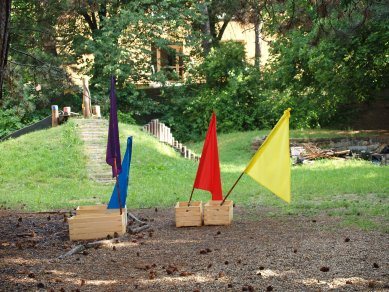
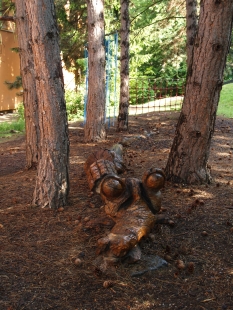
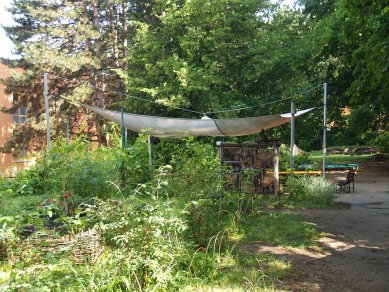
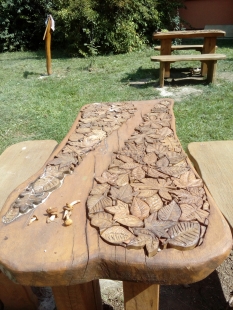
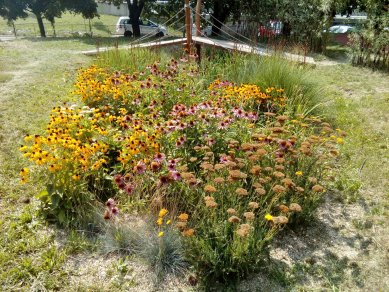
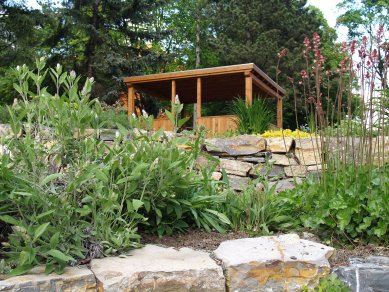
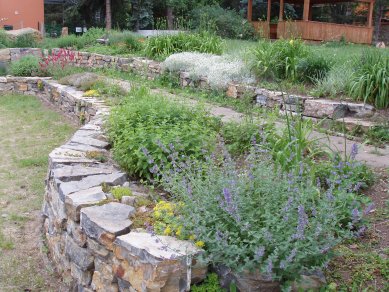
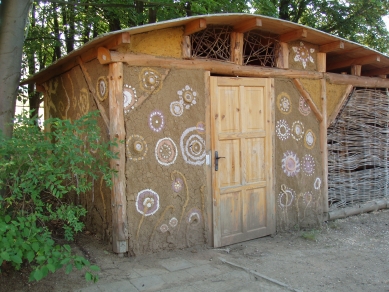

0 comments
add comment












